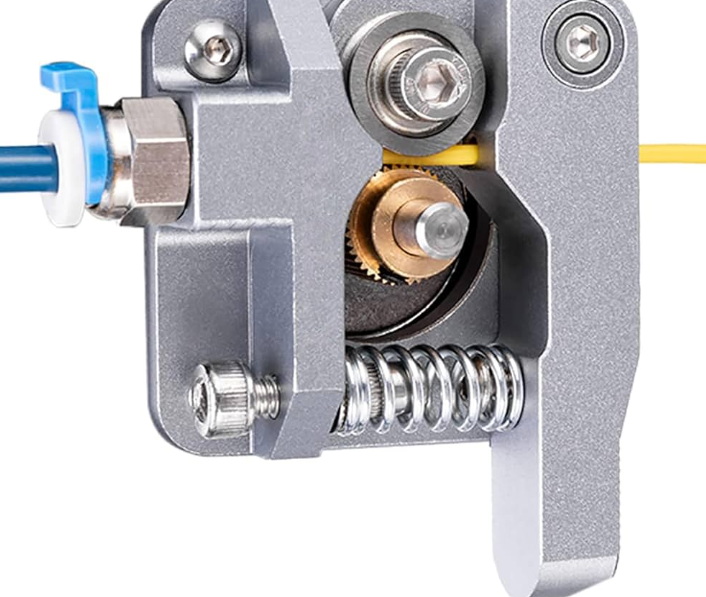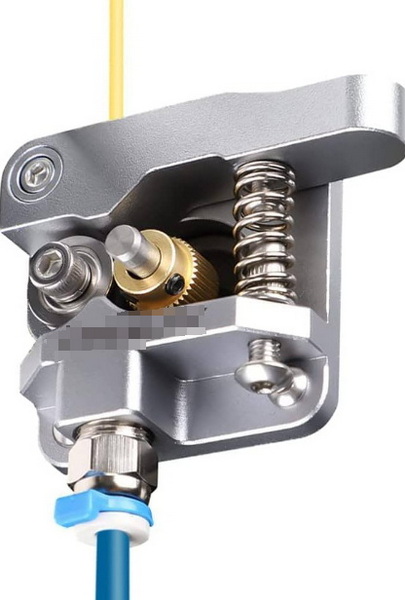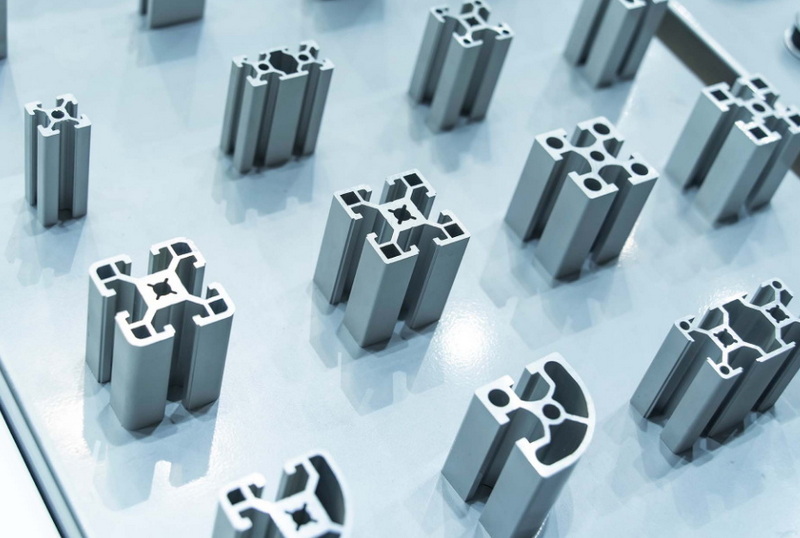Content Menu
● Understanding Aluminum Extrusion
● The Aluminum Extrusion Process
● Advantages of Aluminum Extrusion
>> 1. Design Flexibility
>> 2. Cost-Effectiveness
>> 3. Strength-to-Weight Ratio
>> 4. Corrosion Resistance
>> 5. Thermal and Electrical Conductivity
● Applications of Aluminum Extrusion
● Cost Considerations
>> 1. Die Costs
>> 2. Material Costs
>> 3. Production Volume
>> 4. Finishing Costs
● Environmental Impact
● Case Studies
>> 1. Automotive Industry
>> 2. Solar Panel Mounting Systems
>> 3. Architectural Facades
● Challenges and Limitations
● Future Trends in Aluminum Extrusion
● Conclusion
● Frequently Asked Questions
>> 1. What is the typical lead time for custom aluminum extrusions?
>> 2. How does the cost of aluminum extrusion compare to other manufacturing methods?
>> 3. Can aluminum extrusions be recycled?
>> 4. What are the most common finishes for aluminum extrusions?
>> 5. How do I determine if aluminum extrusion is suitable for my project?
● Citations:
Aluminum extrusion is a versatile manufacturing process that has gained significant popularity across various industries. This article will explore the value proposition of aluminum extrusion, its benefits, applications, and considerations to help you determine if it's worth the investment for your specific needs.

Understanding Aluminum Extrusion
Aluminum extrusion is a process where aluminum alloy material is forced through a die with a specific cross-sectional profile. This process allows for the creation of complex shapes and profiles that would be difficult or impossible to achieve through other manufacturing methods.
The Aluminum Extrusion Process
To better understand the value of aluminum extrusion, let's break down the process into its key steps:
1. Die preparation
2. Billet preheating
3. Extrusion
4. Profile emergence
5. Cooling and stretching
6. Cutting and finishing
Advantages of Aluminum Extrusion
1. Design Flexibility
One of the primary benefits of aluminum extrusion is the ability to create complex shapes and profiles. This flexibility allows designers and engineers to optimize their designs for both form and function.
2. Cost-Effectiveness
While the initial cost of creating a custom die can be significant, aluminum extrusion becomes increasingly cost-effective as production volumes increase. The process is efficient and requires minimal post-processing, reducing overall manufacturing costs.
3. Strength-to-Weight Ratio
Extruded aluminum offers an excellent strength-to-weight ratio, making it ideal for applications where weight is a critical factor, such as in the automotive and aerospace industries.
4. Corrosion Resistance
Aluminum naturally forms a protective oxide layer, providing excellent corrosion resistance. This property can be further enhanced through anodizing or other surface treatments.
5. Thermal and Electrical Conductivity
Aluminum is an excellent conductor of heat and electricity, making it suitable for a wide range of applications in the electronics and HVAC industries.
Applications of Aluminum Extrusion
Aluminum extrusion finds use in numerous industries and applications, including:
- Architecture and construction
- Automotive manufacturing
- Aerospace
- Electronics and electrical equipment
- Renewable energy systems
- Consumer goods

Cost Considerations
When evaluating whether aluminum extrusion is worth it for your project, consider the following cost factors:
1. Die Costs
The primary upfront cost in aluminum extrusion is the custom die. While this can be expensive, the cost is typically amortized over the production run.
2. Material Costs
Aluminum is generally less expensive than many other metals, contributing to the overall cost-effectiveness of the process.
3. Production Volume
As production volumes increase, the cost per unit decreases, making aluminum extrusion particularly attractive for large-scale manufacturing.
4. Finishing Costs
Consider any additional finishing processes required, such as anodizing or powder coating, which can add to the overall cost.
Environmental Impact
Aluminum extrusion offers several environmental benefits:
- Recyclability: Aluminum is 100% recyclable and retains its properties indefinitely.
- Energy Efficiency: The extrusion process is relatively energy-efficient compared to other manufacturing methods.
- Longevity: Extruded aluminum products have a long lifespan, reducing the need for frequent replacements.
Case Studies
To illustrate the value of aluminum extrusion, let's look at a few case studies:
1. Automotive Industry
A major car manufacturer switched from steel to extruded aluminum for their vehicle frame components, resulting in a 30% weight reduction and improved fuel efficiency.
2. Solar Panel Mounting Systems
A renewable energy company used custom aluminum extrusions for their solar panel mounting systems, reducing installation time by 50% and improving overall system performance.
3. Architectural Facades
An architect utilized aluminum extrusions to create a unique, energy-efficient building facade that reduced heating and cooling costs by 25%.
Challenges and Limitations
While aluminum extrusion offers many benefits, it's important to consider its limitations:
- Size constraints: There are limits to the size and complexity of profiles that can be extruded.
- Initial costs: The upfront investment in dies can be significant for small production runs.
- Material limitations: Not all aluminum alloys are suitable for extrusion.
Future Trends in Aluminum Extrusion
The aluminum extrusion industry continues to evolve, with several emerging trends:
1. Advanced alloys for improved performance
2. Integration of smart technologies in extrusion processes
3. Increased focus on sustainability and recycling
4. Development of micro-extrusion techniques for small-scale applications
Conclusion
Aluminum extrusion offers a compelling value proposition for many industries and applications. Its combination of design flexibility, cost-effectiveness, and material properties make it an attractive option for a wide range of projects. While the initial investment in dies can be significant, the long-term benefits often outweigh the costs, especially for medium to large production runs.
When considering whether aluminum extrusion is worth it for your project, carefully evaluate your specific requirements, production volumes, and long-term goals. In many cases, the versatility, efficiency, and sustainability of aluminum extrusion make it a worthwhile investment that can drive innovation and cost savings in your manufacturing processes.

Frequently Asked Questions
1. What is the typical lead time for custom aluminum extrusions?
The lead time for custom aluminum extrusions can vary depending on the complexity of the design and the manufacturer's capacity. Typically, you can expect a lead time of 4-6 weeks for new designs, including die creation and initial production. For repeat orders using existing dies, lead times can be as short as 2-3 weeks.
2. How does the cost of aluminum extrusion compare to other manufacturing methods?
Aluminum extrusion is often more cost-effective than alternative manufacturing methods, especially for medium to large production runs. While the initial die cost can be significant, the per-unit cost decreases as production volume increases. Compared to processes like CNC machining or casting, extrusion generally offers lower overall costs due to its efficiency and minimal material waste.
3. Can aluminum extrusions be recycled?
Yes, aluminum extrusions are 100% recyclable. In fact, aluminum can be recycled indefinitely without losing its properties. This makes aluminum extrusions an environmentally friendly choice, as they can be easily recycled at the end of their useful life, reducing waste and conserving resources.
4. What are the most common finishes for aluminum extrusions?
The most common finishes for aluminum extrusions include:
- Mill finish (unfinished)
- Anodizing (clear or colored)
- Powder coating
- Painting
- Brushed or polished finishes
The choice of finish depends on the application, aesthetic requirements, and desired level of corrosion resistance.
5. How do I determine if aluminum extrusion is suitable for my project?
To determine if aluminum extrusion is suitable for your project, consider the following factors:
- Design complexity: Can your design be achieved through extrusion?
- Production volume: Is your production volume high enough to justify the initial die cost?
- Material requirements: Does aluminum meet your strength, weight, and corrosion resistance needs?
- Cost considerations: How does the total cost of extrusion compare to alternative manufacturing methods?
- Long-term goals: Will extrusion provide scalability and flexibility for future design iterations?
Consulting with an experienced aluminum extrusion manufacturer can help you evaluate these factors and make an informed decision.
Citations:
[1] https://www.odmetals.com/blog/is-the-cost-of-custom-aluminum-extrusions-worthwhile
[2] https://superiormetalshapes.net/aluminum-extrusion-costs-less-than-you-think/
[3] https://www.tensilemillcnc.com/blog/12-major-benefits-of-aluminum-extrusions
[4] https://www.wileymetal.com/five-common-applications-of-aluminum-extrusion/
[5] https://www.uniqueextrusions.com/photo-gallery/
[6] https://www.freepik.com/free-photos-vectors/aluminum-extrusion
[7] https://www.gabrian.com/what-is-aluminum-extrusion-process/
[8] https://waykenrm.com/blogs/aluminum-extrusion/
[9] https://starext.com/news/aluminum-extrusion-finishing-fabrication-frequently-asked-questions-faq
[10] https://starext.com/frequently-asked-questions-about-aluminum-extrusions
[11] https://www.ryerson.com/metal-resources/metal-market-intelligence/5-questions-on-aluminum-extrusions






















